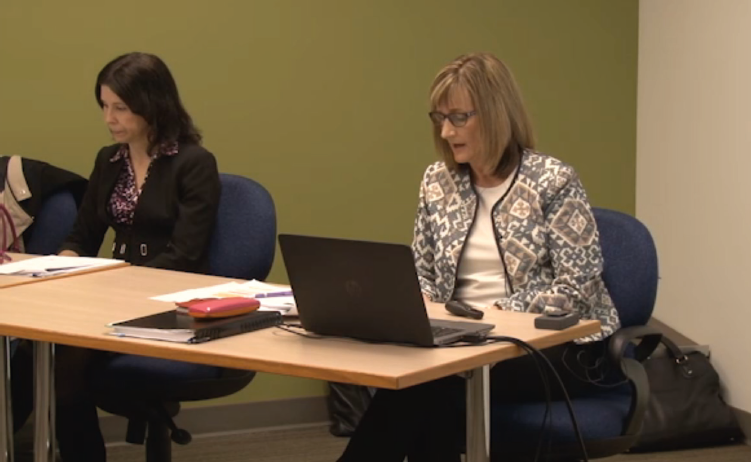By Michael Scoular (The Cascade) — Email

A new student fee, presented to the broader university community at Monday’s budget forum, is intending to add service staff for the next academic year. Critics, including the provincial party of opposition (NDP), the Student Union Society (SUS), and the president of the faculty-staff association (FSA) see it, however, as a work-around for the provincial tuition-limit policy, which allows public universities to raise tuition no more than two per cent each year.
This fee, the “Student Experiential Learning and Wellness fee,” will cost $2.79 per credit, or $83.70 in an academic year for a student on-track to complete their degree in four years (30 credits per year).
This announcement follows news of other institutions, including Vancouver Island University, Vancouver Community College, and North Island College, adding similar fees. But reporting from the Canadian Press shows that this trend was directed, in part, by the Ministry of Advanced Education. The president at North Island refers to being informed of “a new interpretation” of the limit policy. And at UFV, chief financial officer Jackie Hogan calls it an “opportunity.”
“We received that information,” she says, “and considered, ‘How does that fit with our goals and teaching plans?’”
There are five exceptions to the limit policy, which has existed, unchanged, since 2005. The relevant one here states: “Institutions may set the initial tuition and mandatory fee rate for new instructional programs (not amendments to existing programs). After the first year, tuition and mandatory fees will be subject to the tuition limit policy.”
The proposed budget for 2016-17 lists several positions that will be funded in part or in whole by the new fee, which is projected to total $540,000 in new revenue. These include part- or full-time staff positions at: the Career Centre, focusing on career networking; support for the co-curricular record and Peer Resource and Leadership Centre (PRLC); a coordinator in portfolio development; and a coordinator in recreation and wellness education and programs. Additions will also be made to the Educational Enhancement Fund, which supports students attending conferences and research that requires travel.
Aside from the portfolio program, a long in-the-works plan that would align with the co-curricular record’s aims of a more extensively quantified transcript, these positions would reside within already-existing centres. But Gordon says communication with the Ministry shows this shouldn’t be a problem in getting the new fee approved.
“If we’re going to be offering new programming, even if it’s offered through the PRLC, it’s still new programming,” she says. “It might be operated under PRLC, under Student Life, but it’s a new program, a new service that’s being provided to our students.”
Based on a survey conducted by The Cascade of 87 students on the Abbotsford and Chilliwack campuses, opinion on the matter is split, with 38 in favour and 49 against the idea of the fee.
Student responses against the fee cited wishes for optional fees, usage-based fees, and low satisfaction with the already-existing services. “If the fee was less I could get on board,” said Dan Coates, an engineering student. “But this seems a little much — this should be partially covered by the university.”
Another student echoed other comments in favour, wishing for more of an effort made to share information with students. “I know and like what it goes towards, even if I don’t need those services right now,” said Chuck Barker. “But if all budget plans were made known to students … I would have enough info to make a more educated decision.”
Opposition to the new fee has focused on this use of a technicality to add to steadily-increasing tuition rates.
“The Tuition Limit Policy is supposed to provide assurance to students that the cost of education can be reasonably predicted over the course of their program,” writes Sukhi Brar, the vice-president external for the SUS in a statement. “Instead, [the Ministry] suddenly has created a new interpretation of a decade-old policy without public information or consultation, thereby allowing institutions across the province to charge students for the costs of government inaction.”
At the budget forum, FSA president Sean Parkinson voiced his disappointment following Hogan and Gordon’s presentation. “It’s not my job to advocate on behalf of students,” he said. “But I would like to say that maintaining properly funded post-secondary education is in all of our interests, and to get around a tuition limit policy is unfortunate.” No representative from the SUS was present at the budget forum.
Gordon says that concerns over student affordability are not a significant problem with this new fee, citing statistics regarding student financial aid as one indicator.
“About 20 per cent of our students receive government assistance under the student loan plan, and the average for the province is about 30 per cent,” she says. Gordon also adds that student work-study positions will be added to assist with the new additions.
President Mark Evered, responding to Parkinson’s comment at the forum, focused on affordability as well, rather than the technical nature of the fee, posing a rhetorical question: “What is that reasonable amount for a student to pay, for probably the very best investment in their life?”

